History
History of Westminster Abbey
An architectural masterpiece of the 13th to 16th centuries, Westminster Abbey also presents a unique pageant of British history – the shrine of St Edward the Confessor, the tombs of kings and queens, and countless memorials to the famous and the great.
It has been the setting for every Coronation since 1066 and for numerous other royal occasions, including sixteen royal weddings.
Today it is still a church dedicated to regular worship and to the celebration of great events in the life of the nation. Neither a cathedral nor a parish church, Westminster Abbey (or the Collegiate Church of St Peter, Westminster to give it its correct title) is a "Royal Peculiar" under the jurisdiction of a Dean and Chapter, subject only to the Sovereign and not to any archbishop or bishop.
Westminster Abbey, a work of architectural genius, a place of daily worship, deploying the resources of high musical expertise, a burial place of kings, statesmen, poets, scientists, warriors and musicians, is the result of a process of development across the centuries, which represents the response of a monastery and later a post-Reformation church to the stimulus and challenge of its environment.
St Edward's church
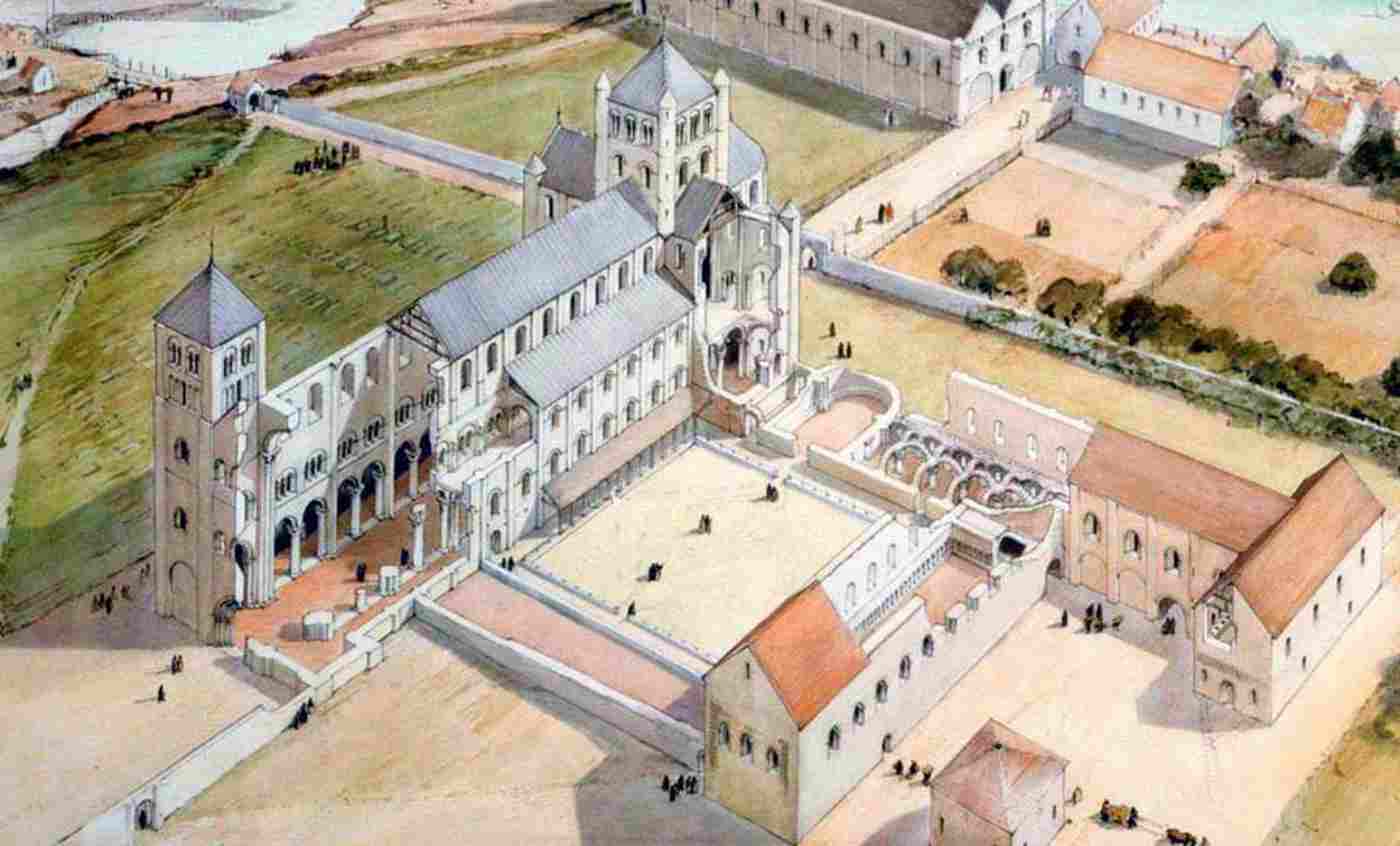
A reconstruction drawing of the Norman Abbey and Palace by Terry Ball and Richard Gem
In the 1040s King Edward (later St Edward the Confessor) established his royal palace by the banks of the river Thames on land known as Thorney Island. Close by was a small Benedictine monastery founded under the patronage of King Edgar and St Dunstan around 960A.D. This monastery Edward chose to re-endow and greatly enlarge, building a large stone church in honour of St Peter the Apostle. This church became known as the "west minster" to distinguish it from St Paul's Cathedral (the east minster) in the City of London. Unfortunately, when the new church was consecrated on 28th December 1065 the King was too ill to attend and died a few days later. His mortal remains were entombed in front of the High Altar.
The only traces of Edward's monastery to be seen today are in the round arches and massive supporting columns of the undercroft and the Pyx Chamber in the cloisters. The undercroft was originally part of the domestic quarters of the monks. Among the most significant ceremonies that occurred in the Abbey at this period was the coronation of William the Conqueror on Christmas day 1066, and the "translation" or moving of King Edward's body to a new tomb a few years after his canonisation in 1161.
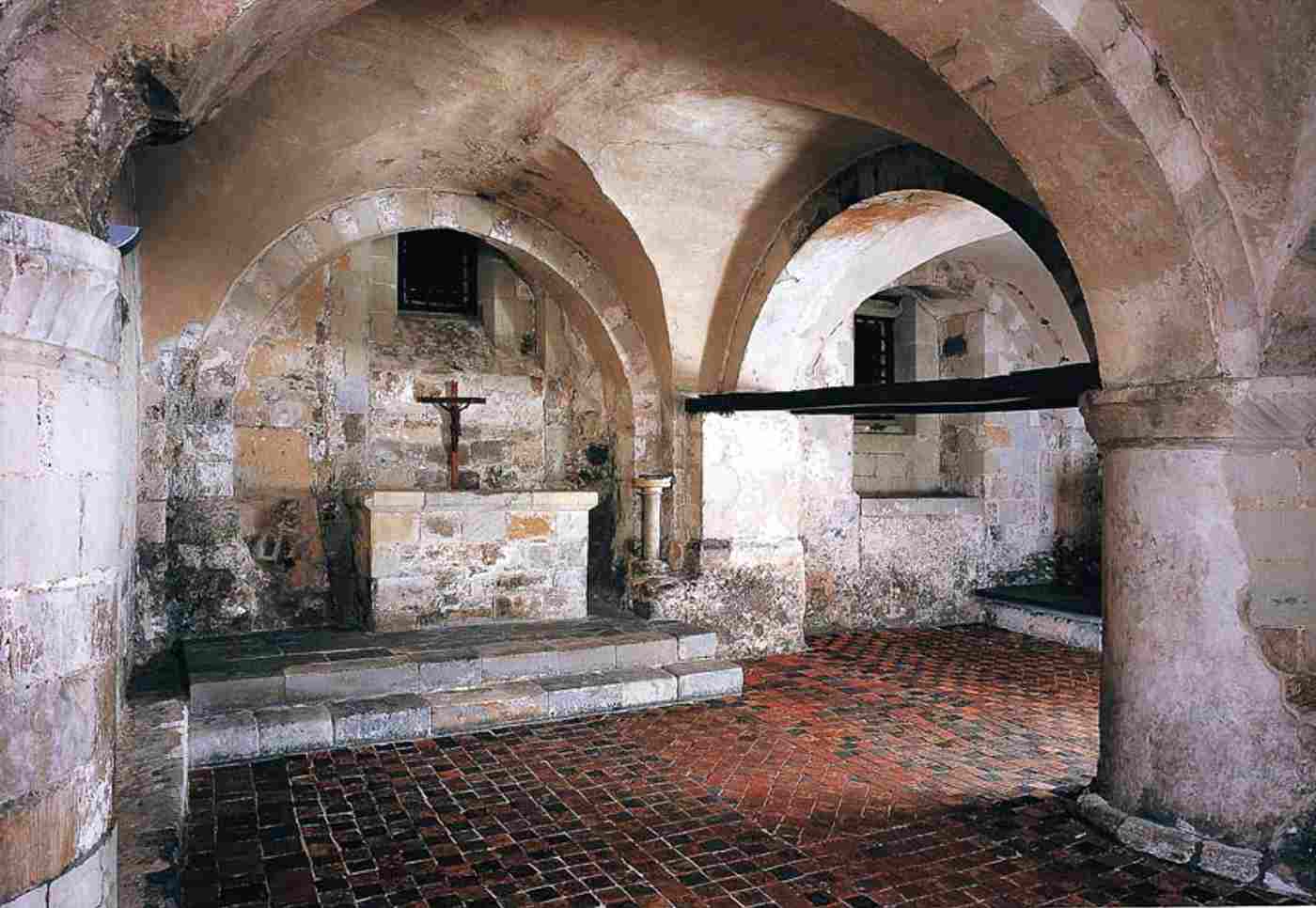
Pyx chamber
Rebuilding the Abbey
Edward's Abbey survived for two centuries until the middle of the 13th century when King Henry III decided to rebuild it in the new Gothic style of architecture. It was a great age for cathedrals: in France it saw the construction of Amiens, Evreux and Chartres and in England Canterbury, Winchester and Salisbury, to mention a few. Under the decree of the King of England, Westminster Abbey was designed to be not only a great monastery and place of worship, but also a place for the coronation and burial of monarchs. This church was consecrated on 13th October 1269. Unfortunately the king died before the nave could be completed so the older structure stood attached to the Gothic building for many years.
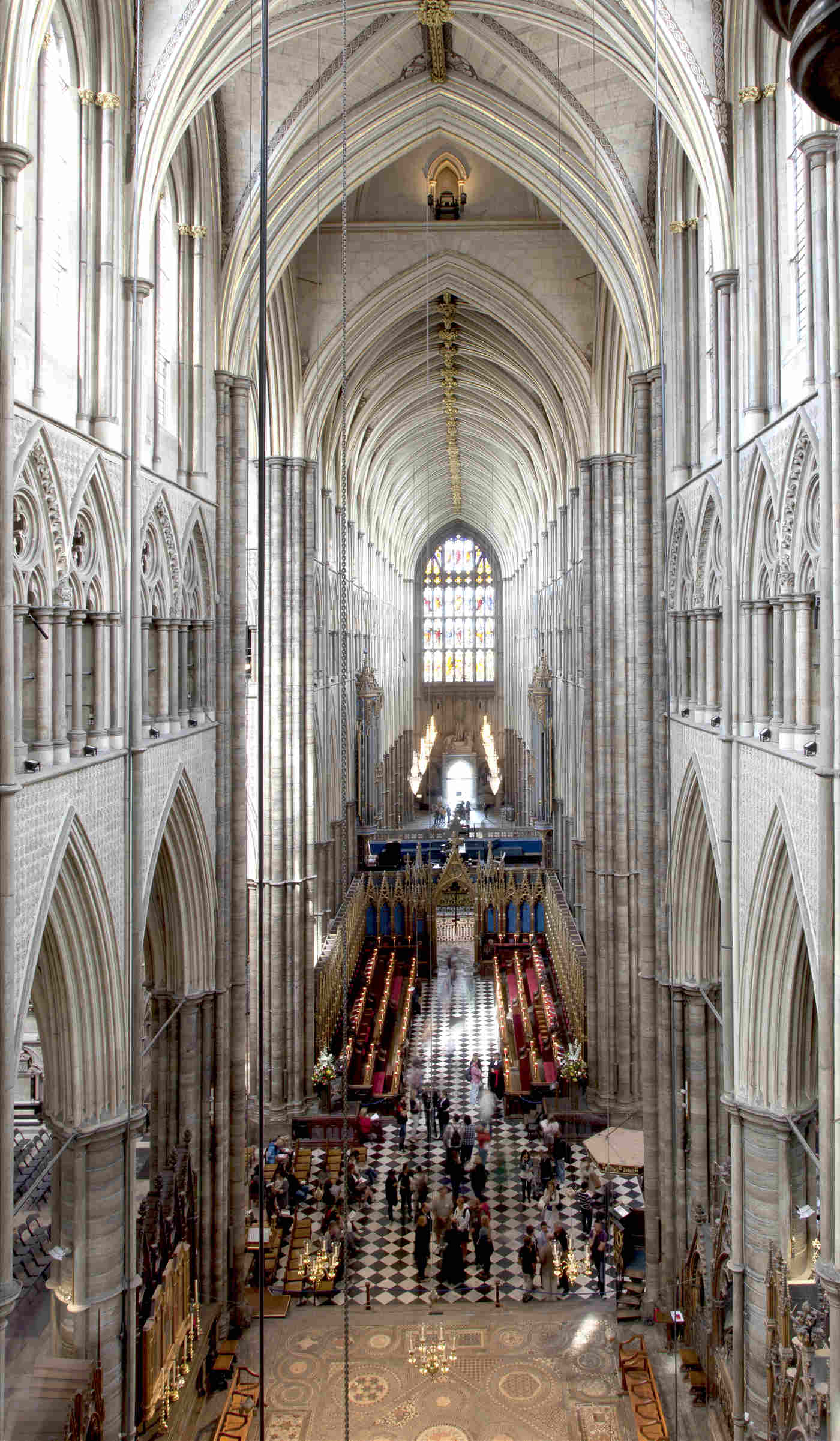
The Abbey today viewed from the triforium galleries
Coronations and burials
Every monarch since William the Conqueror has been crowned in the Abbey, with the exception of Edward V and Edward VIII (who abdicated) who were never crowned. The ancient Coronation Chair can still be seen in the church.
It was natural that Henry III should wish to translate the body of the saintly Edward the Confessor into a more magnificent tomb behind the High Altar in his new church. This shrine survives and around it are buried a cluster of medieval kings and their consorts including Henry III, Edward I and Eleanor of Castile, Edward III and Philippa of Hainault, Richard II and Anne of Bohemia and Henry V.
There are around 3,300 burials in the church and cloisters and many more memorials. The Abbey also contains over 600 monuments, and wall tablets – the most important collection of monumental sculpture anywhere in the country. Notable among the burials is the Unknown Warrior, whose grave, close to the west door, has become a place of pilgrimage. Heads of State who are visiting the country invariably come to lay a wreath at this grave.

The coronation chair
The Shrine of St Edward the Confessor
Henry VII's Lady Chapel
A remarkable new addition to the Abbey was the glorious Lady chapel built by King Henry VII, first of the Tudor monarchs, which now bears his name. This has a spectacular fan-vaulted roof and the craftsmanship of Italian sculptor Pietro Torrigiano can be seen in Henry's fine tomb. The chapel was consecrated on 19th February 1516. Since 1725 it has been associated with the Most Honourable Order of the Bath and the banners of the current Knights Grand Cross surround the walls. The Battle of Britain memorial window by Hugh Easton can be seen at the east end in the Royal Air Force chapel. A new stained glass window above this, by Alan Younger, and two flanking windows with a design in blue by Hughie O'Donoghue, give colour to this chapel.
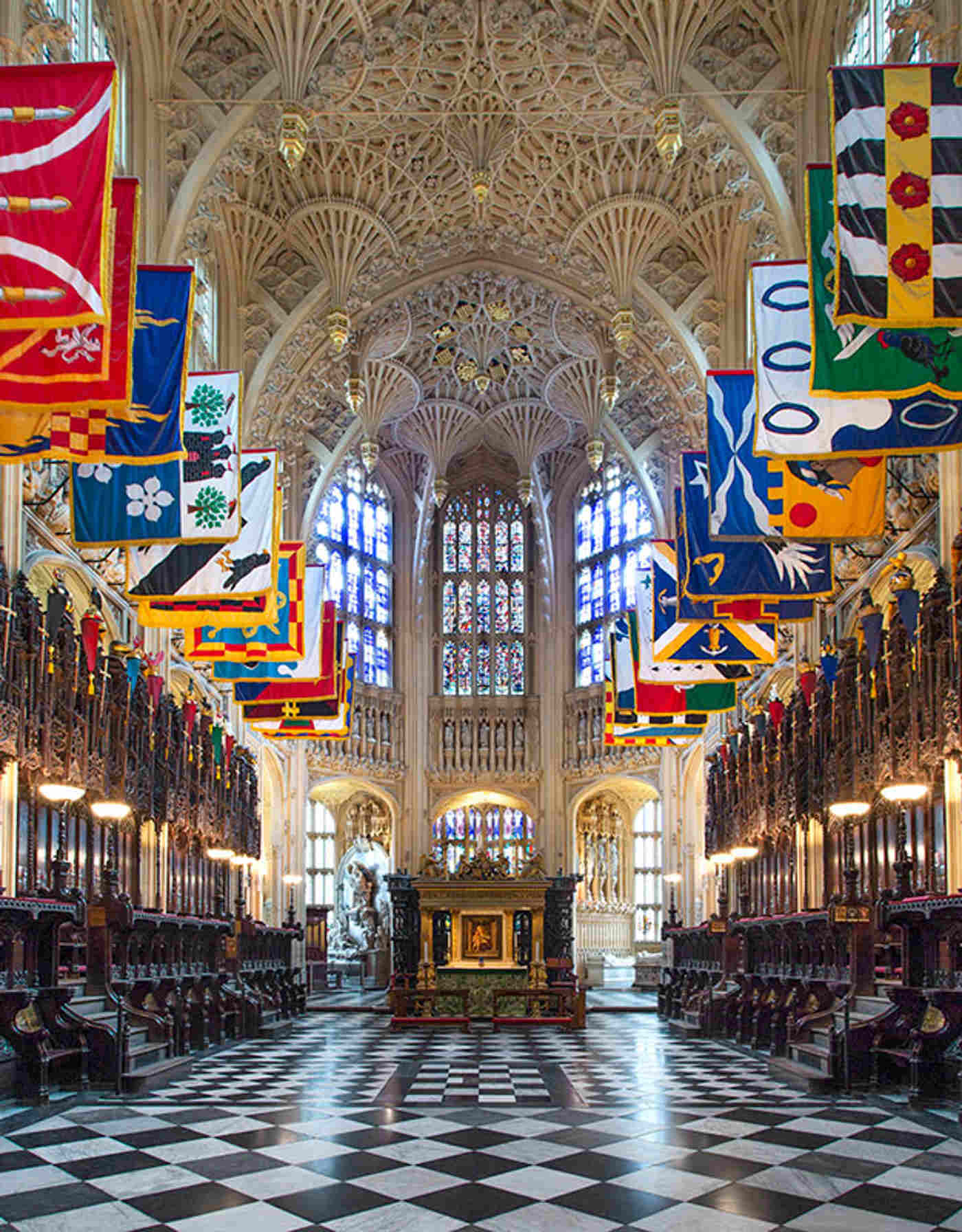
The Lady Chapel
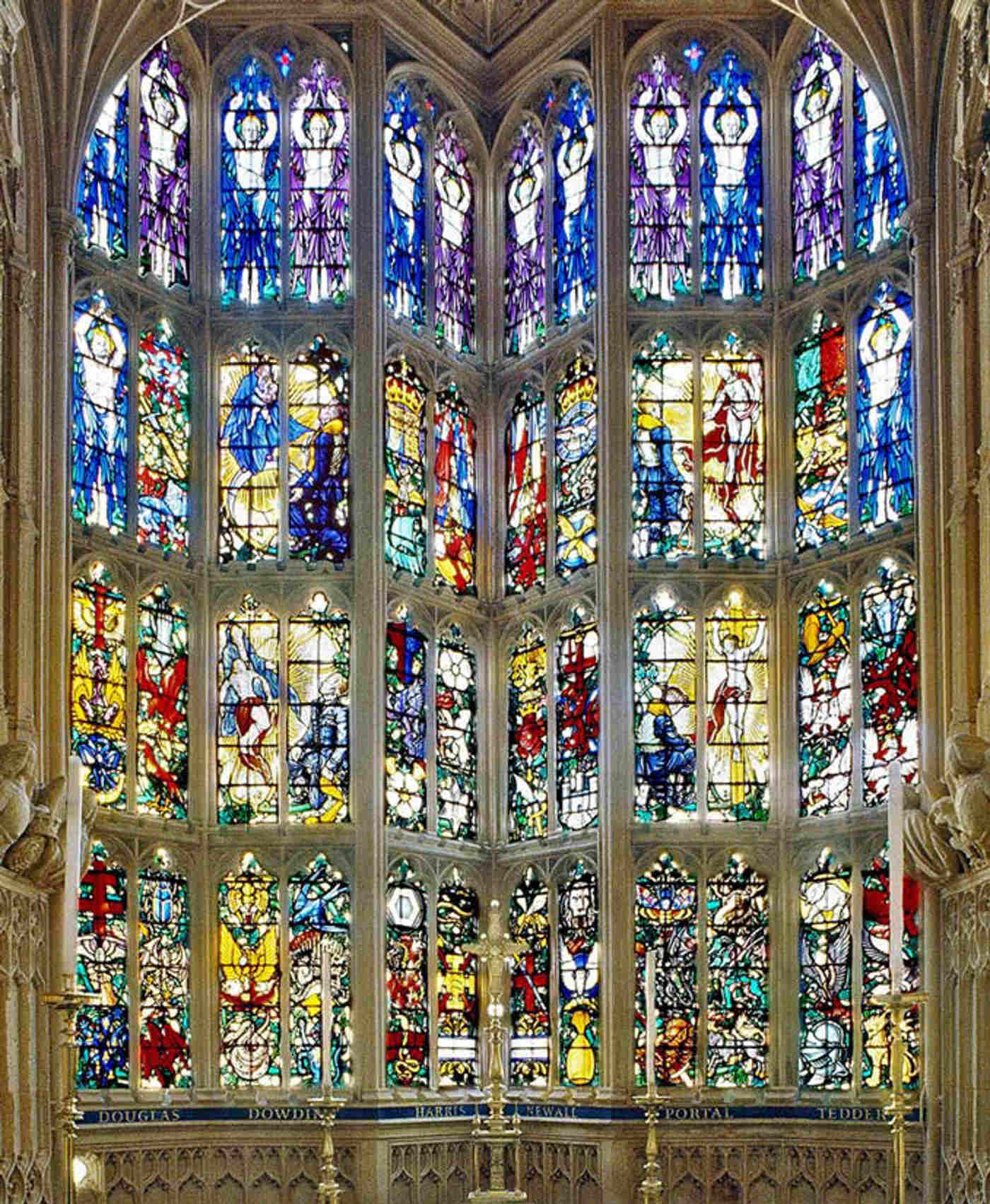
The RAF Chapel and Battle of Britain memorial window
Two centuries later a further addition was made to the Abbey when the western towers (left unfinished from medieval times) were completed in 1745, to a design by Nicholas Hawksmoor.
Little remains of the original medieval stained glass, once one of the Abbey's chief glories. Some 13th century panels can be seen in the Queen's Diamond Jubilee Galleries. The great west window and the rose window in the north transept date from the early 18th century but the remainder of the glass is from the 19th century onwards. The newest stained glass is in The Queen Elizabeth II window, designed by David Hockney.
History did not cease with the dissolution of the medieval monastery on 16th January 1540. The same year Henry VIII erected Westminster into a cathedral church with a bishop (Thomas Thirlby), a dean and twelve prebendaries (now known as Canons). The bishopric was surrendered on 29th March 1550 and the diocese was re-united with London, Westminster being made by Act of Parliament a cathedral church in the diocese of London. Mary I restored the Benedictine monastery in 1556 under Abbot John Feckenham.
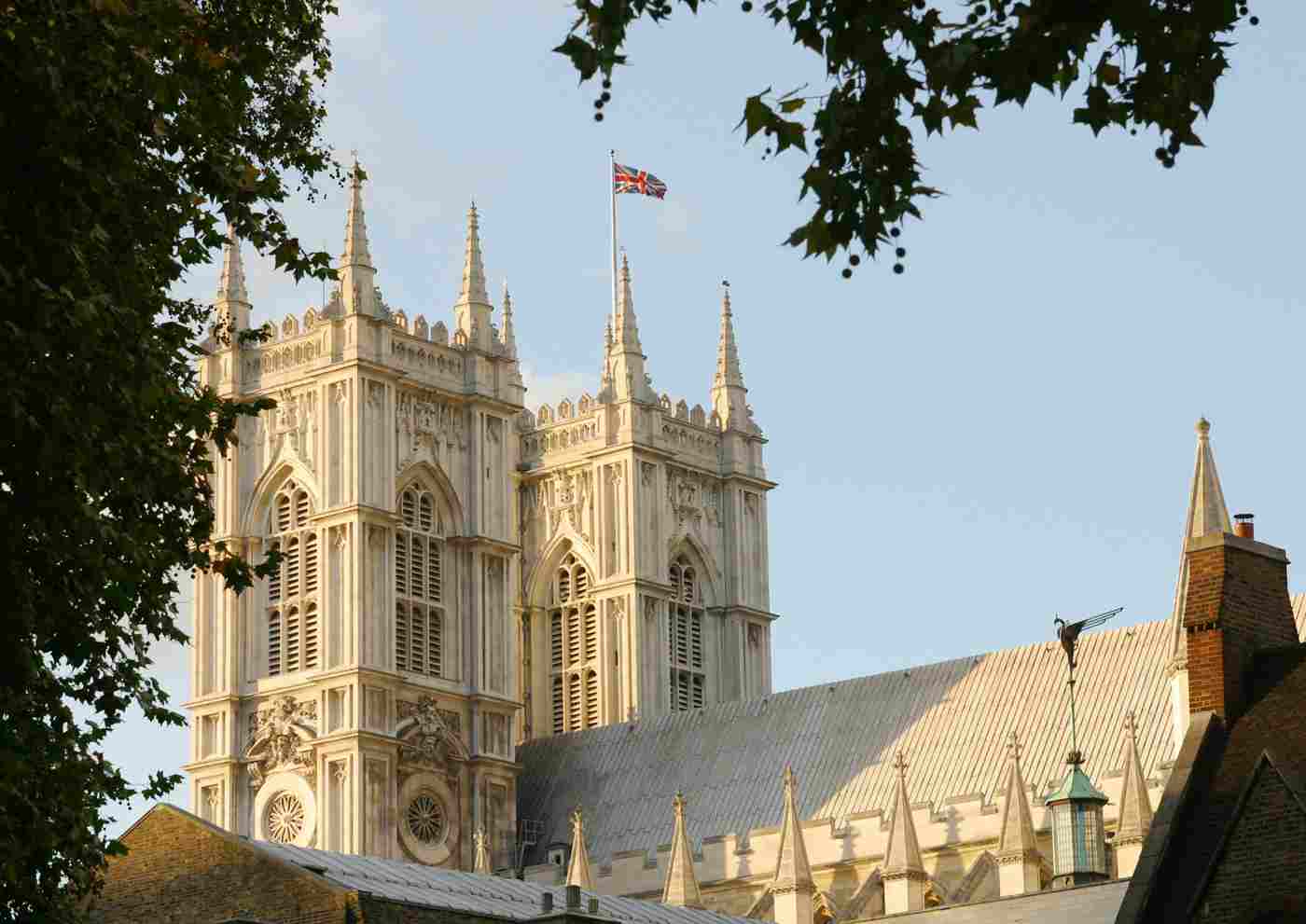
The Abbey's West Towers
Elizabeth I's foundation
But on the accession of Elizabeth I the religious houses revived by Mary were given by Parliament to the Crown and the Abbot and monks were removed in July 1559. Queen Elizabeth I, buried in the north aisle of Henry VII's chapel, refounded the Abbey by a charter dated 21 May 1560 as a Collegiate Church exempt from the jurisdiction of archbishops and bishops and with the Sovereign as its Visitor. Its Royal Peculiar status from 1534 was re-affirmed by the Queen and In place of the monastic community a collegiate body of a dean and prebendaries, minor canons and a lay staff was established and charged with the task of continuing the tradition of daily worship (for which a musical foundation of choristers, singing men and organist was provided) and with the education of forty Scholars who formed the nucleus of what is now Westminster School (one of the country's leading independent schools). In addition the Dean and Chapter were responsible for much of the civil government of Westminster, a role which was only fully relinquished in the early 20th century. Thus the Abbey was reshaped and newly patterned to discharge a distinctive yet worshipful role in a modern age.
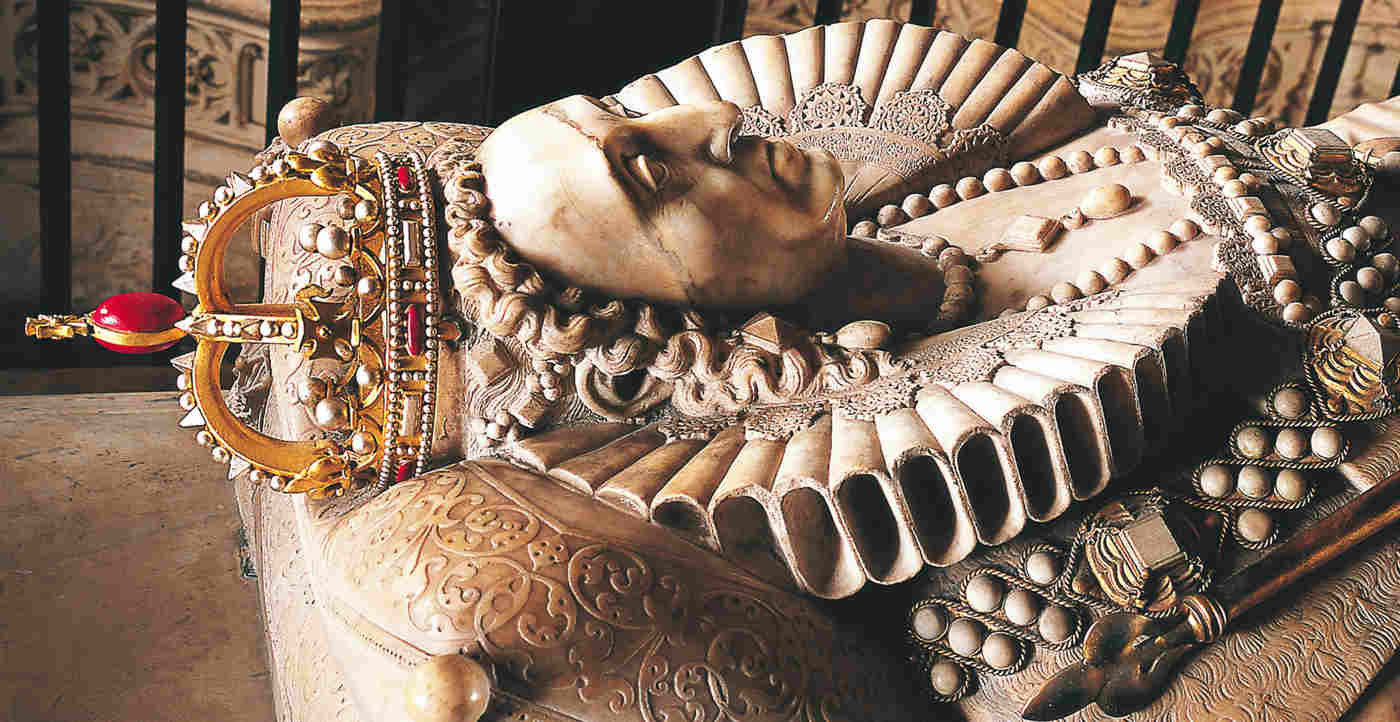
The tomb effigy of Elizabeth I
The church today
Still today, a daily pattern of worship is offered to the Glory of God. Special services, representative of a wide spread of interest and social concern, are held regularly. Annual services include a thanksgiving for victory in the Battle of Britain in 1940, a service for Judges at the start of the legal year and a service to mark Commonwealth Day.

The Abbey on Commonwealth Day
In 1965-1966 the Abbey celebrated the 900th anniversary of the consecration of King Edward's abbey, taking as its theme 'One People'. Such a theme seemed to be fitting for a church which, through a long history of involvement with the developing life of the British people, has become known throughout the world. In 2010 His Holiness Pope Benedict XVI became the first Pope to visit the Abbey.
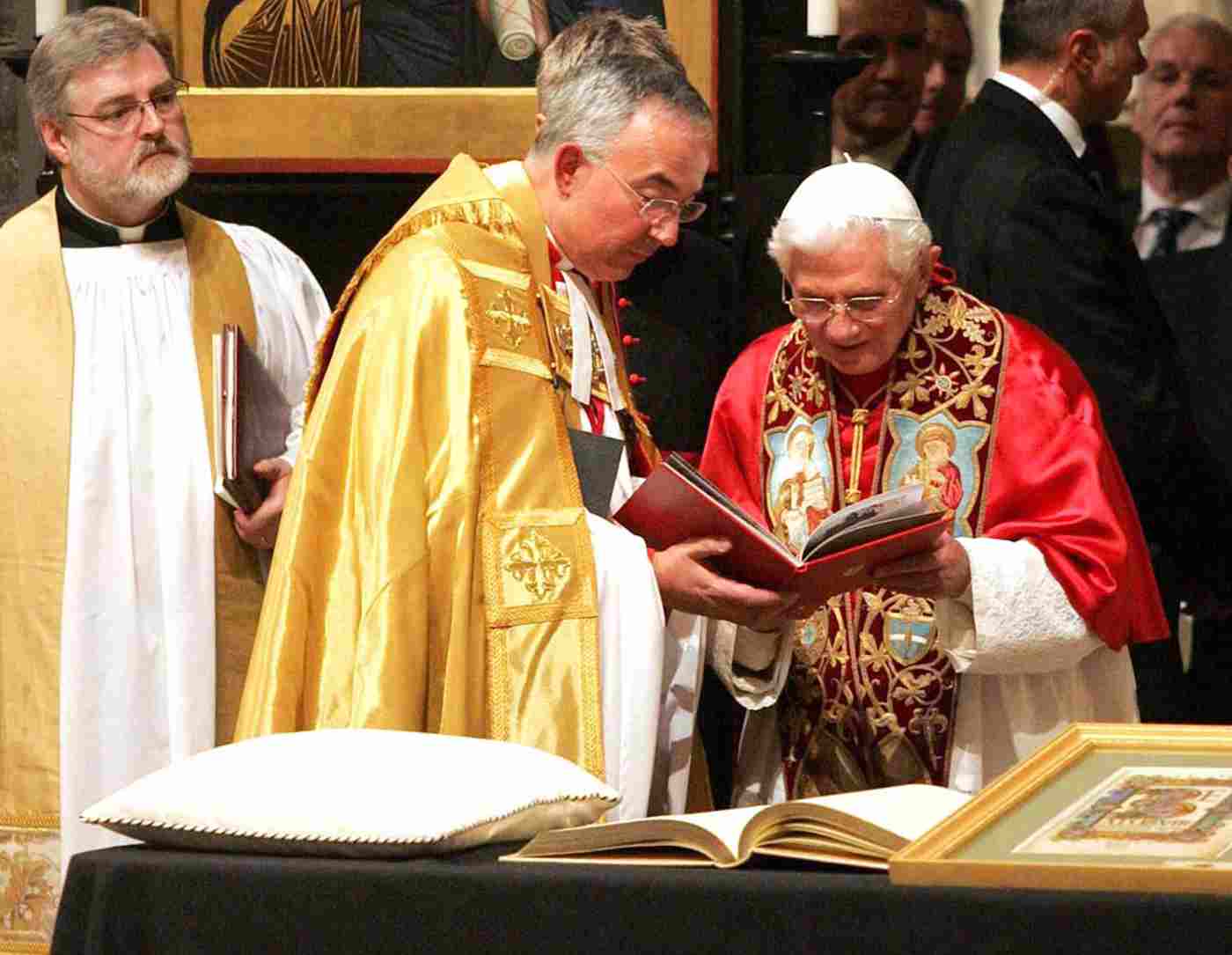
Pope Benedict XVI visits Westminster Abbey, 2010
Further reading
Treasures of Westminster Abbey by Tony Trowles, revised edition 2018
Westminster Abbey. A Souvenir Guide by James Wilkinson, revised edition 2018
Westminster Abbey. A church in history, edited by D. Cannadine, 2019
The Cosmatesque mosaics of Westminster Abbey. The pavement and royal tombs... by Warwick Rodwell and David Neal, 2019
Westminster. The art, architecture and archaeology of the Royal Abbey edited by W. Rodwell & T. Tatton-Brown (BAA Conference Transactions) vol.1, 2015 (This includes chapters on medieval and Tudor topography of Westminster, the Romanesque monastic buildings, gleanings from the 1253 building accounts, aspects of the later medieval fabric and history and chronicles from 1250-1450).
Crown and Cloister. The Royal story of Westminster Abbey by James Wilkinson, 2010
Westminster Abbey. 1000 years of music and pageant by James Wilkinson, 2003
The medieval sacristy of Westminster Abbey by Matthew Payne & Richard Foster in The Antiquaries Journal Vol.100, 2020 [an area recently excavated]
Chapels and coffins at Westminster Abbey by P.Jorgensen, W.Rodwell & J. Butler in Medieval Archaeology 60/2, 2016 [concerning excavations south of Henry VII's chapel]
Kingdom, Power and Glory. A historical guide to Westminster Abbey by John Field, 2nd edn. 1999
A House of Kings. The history of Westminster Abbey edited by Edward Carpenter, revised 1972
Westminster Abbey: the Lady Chapel of Henry VII, edited by T. Tatton-Brown and R. Mortimer, 2003
Westminster Abbey and the Plantagenets...1200-1400 by Paul Binski, 1995
Westminster Abbey Chapter House, the history, art and architecture... edited by W. Rodwell and R. Mortimer, 2010
History and Treasures of Westminster Abbey by L.E. Tanner, 1953
Westminster Abbey. The Church, Convent, Cathedral and College of St Peter Westminster by H.F. Westlake, 2 vols, 1923
A bibliography of Westminster Abbey by Tony Trowles, 2005
The King's Nurseries: the story of Westminster School by John Field, 2nd edn. 1998
Guidebooks can be purchased from the Abbey Shop



